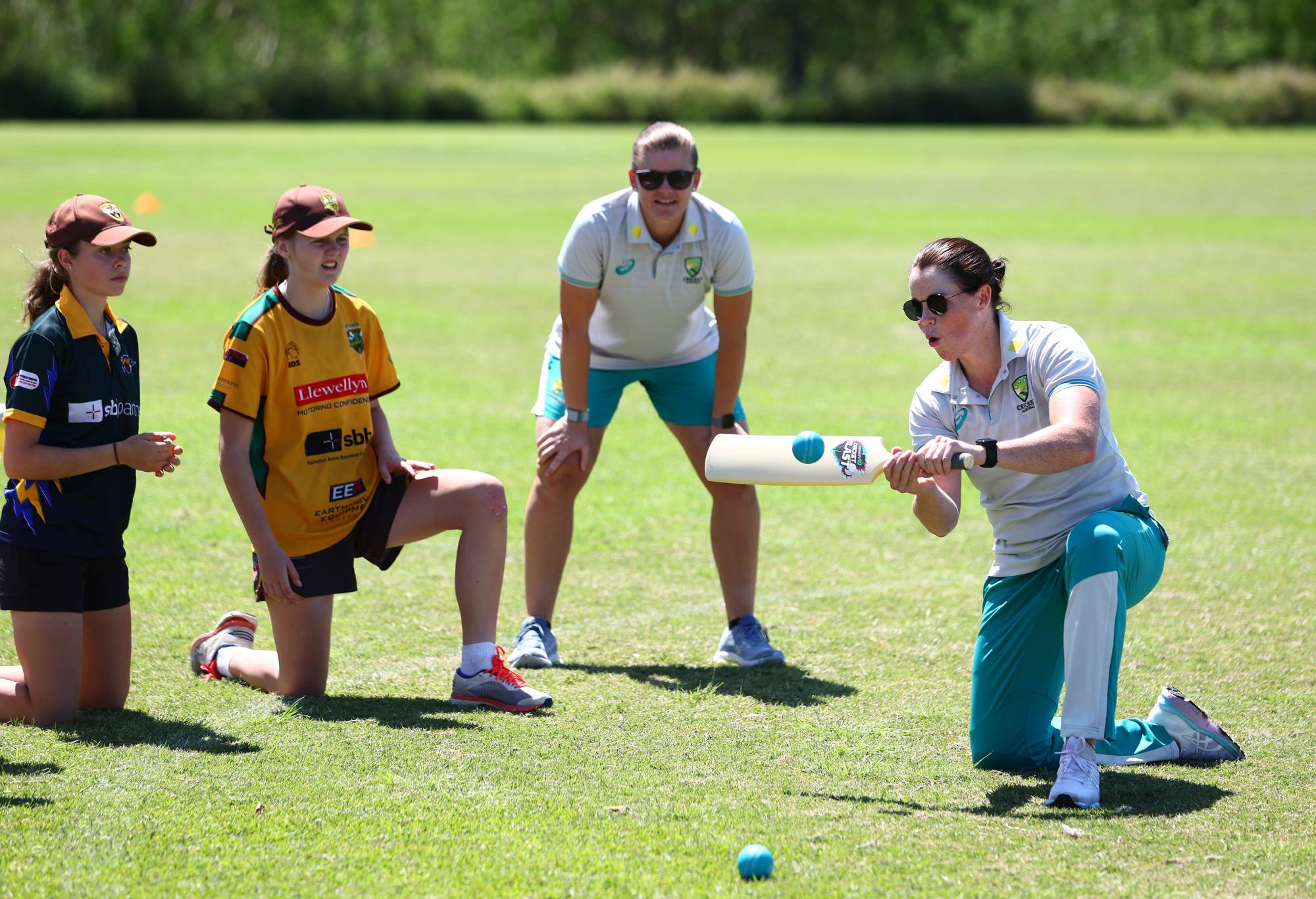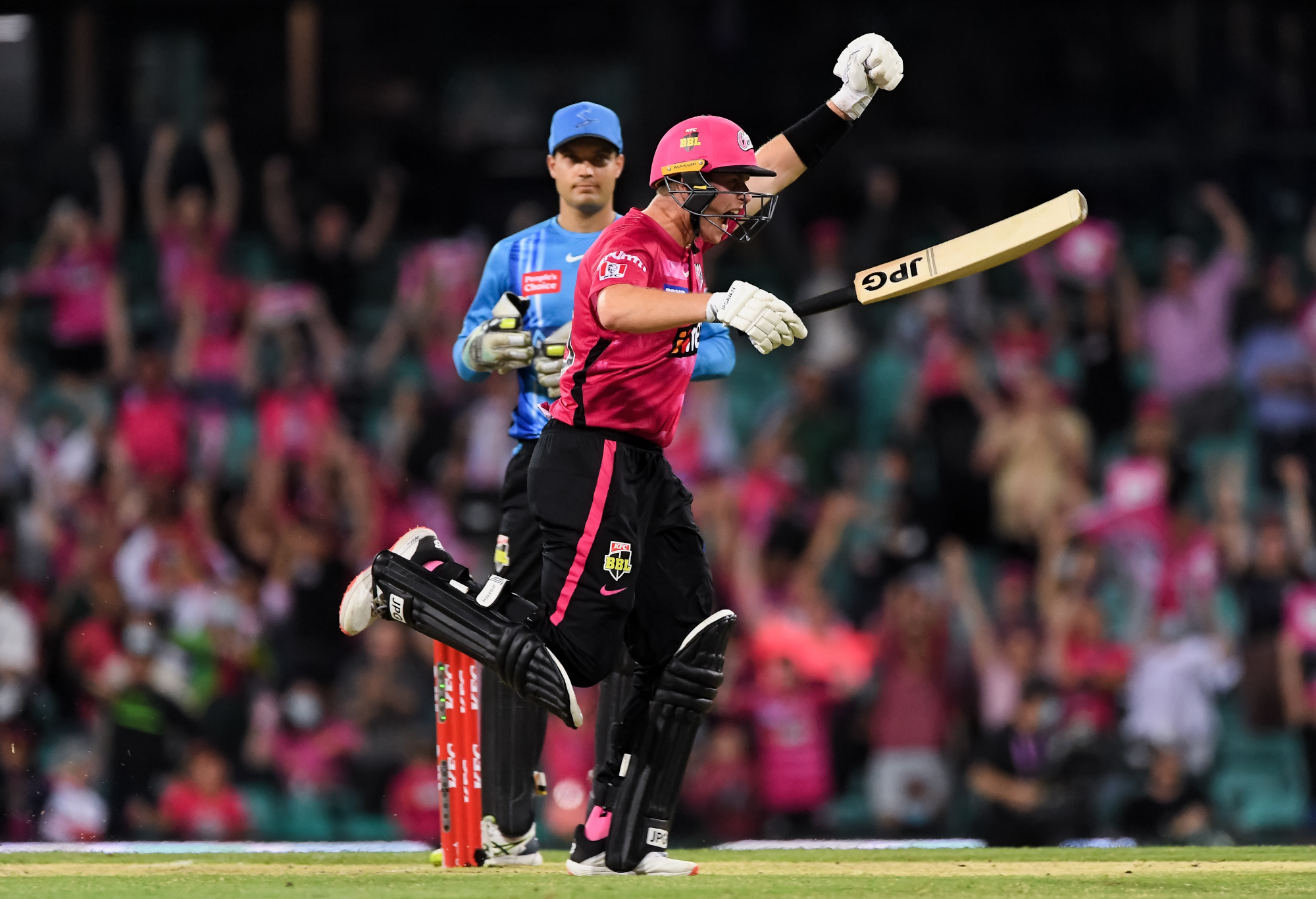If Australia relies on backyard cricket to continue being the breeding ground of champions, the future will be bleak.
Backyards are simply vanishing at an alarming rate and for a sport like cricket, that can have a flow-on effect as all sports try to shore up their base in the post-pandemic era.
Amid fears of a “missing generation” of junior players because of the impact of COVID-19’s various shutdowns and restrictions, it is a critical time for cricket to replenish the grassroots.
The cold hard facts of the matter are that Australia’s love affair with the quarter-acre block has been waning for the past few decades and over the last 10 years, residential blocks have shrunk considerably.
CLICK HERE for a seven-day free trial to watch the T20 World Cup on KAYO
According to the Australian Bureau of Statistics, our house sizes are only getting smaller by a fraction – three square metres or 1% over the past 10 years.

(Photo by Kelly Barnes/Getty Images)
But the land on which we’re building these new homes has dropped by 13% or 64 square metres on average from 2012-21 via data obtained from building approvals in the five largest capital cities – Sydney, Melbourne, Brisbane, Adelaide and Perth.
Cricket’s age-old breeding ground is literally shrinking and administrators need to find new ways to engage kids from an early age or risk losing them to other sports or even worse, to indoor pursuits involving electronic devices requiring little to no physical exertion.
Get off my lawn? Get on it, more like it.
Cricket Australia crunched the numbers after last season’s first summer where COVID-19 measures had eased and the numbers were encouraging but there is still plenty of work to be done.
Junior club registrations rose 5000 to 114,400 last summer, which was also up on the most recent season without pandemic regulations of 2019-20 when 107,500 players padded up to play.
In girls cricket, the number of junior registered players rose from 10,700 to 13,200 but the fact that it is such a relatively small number compared to the boys illustrates how the sport has been slow to invest in the female ranks until recent years.
On the flip side that does mean there is plenty of room for growth but cricket is starting on the back foot against the main activities for girls such as swimming, soccer, netball, gymnastics and recreational dancing.

Australian players Jess Jonassen and Grace Harris at a clinic with some junior cricketers. (Photo by Chris Hyde/Getty Images for Cricket Australia)
As a sidebar, for any prospective parents who are thinking about dipping their toe into coaching, girls are so much easier than boys in this regard.
Young female cricketers appear to have an appreciation for advice while boys – pigheaded as most of us were at a young age – tend to need to be convinced that what the coach is telling them is worthwhile information on top of their already “advanced knowledge” of the game.
Back to the Cricket Australia numbers and overall registered participation, which includes indoor and school-based cricket, was down by 16% on the pre-COVID figures.
Tapping into the nation’s cricket-mad South Asian communities, who have felt marginalised by the sport’s pale, male and stale image, is another growth area which Cricket Australia has identified and wisely invested significant resources.
The BBL and WBBL may not be everyone’s cup of tea but it’s short-form entertainment is essential to grabbing the brief attention spans of younger fans with the hope that they remain cricket supporters in later life.
Cricket should regain more ground on the participation front this summer, as long as La Nina doesn’t compound the COVID-19 delays by causing too much more havoc.
The key is getting first-time participants taking up the sport – there were 15,000 fewer beginners last summer which is a worrying sign that if cricket doesn’t get kids hooked in that crucial 5-12 age group, it will miss the boat.
As someone who coaches junior cricket, it is clear a lot of young male players don’t have the natural affinity with bat and ball that previous generations had.
Whereas it used to be the case that pretty much every boy in school would at least be able to roll the arm over in a serviceable manner, if you wander down to an under-10s game on a Saturday morning, there’s a fair chance you will see a chucker or two who have been taught – or learned in the backyard – the fundamental skill of bowling.

(Photo by Steven Markham/Icon Sportswire via Getty Images)
My sample size of my local association is not necessarily reflective of every area in the big brown land Down Under but after speaking to coaches from other districts, it’s clear there are grave concerns about the production line not churning out the standard of junior cricketer that once was the case.
Cricket Australia’s Junior Blasters (for kids 5-7) and Master Blasters (7-10) are fun programs to give kids a taste of cricket and the stage one rules for under 11s and under 13s are designed to keep all players interested.
Traditionalists might not like the fact that junior players in the first couple of stages only receive a certain amount of deliveries divided among the team and that wickets result in five-run deductions rather than dismissals.
Those rules won’t mean gun batters give up the sport but it will keep the less-skilled players engaged and hopefully signing up again next summer – there was nothing worse as a junior cricketer than waiting all week for Saturday, getting out for a duck and then facing seven days before getting a chance to make up for it.
At least you could have a hit in the backyard and there’d be a few willing kids in the neighbourhood ready to do likewise.
>Cricket News

%20(3).jpeg)



0 Comments